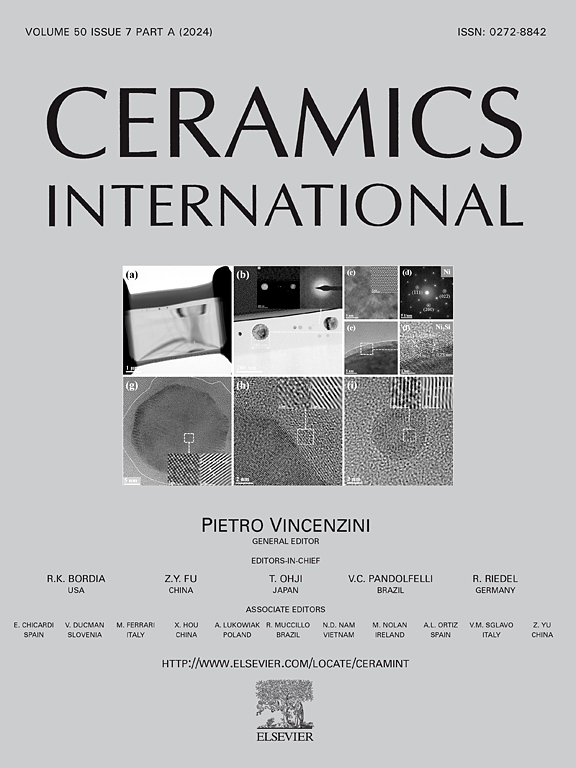Multivalent metal perovskite YbCoO3 as a novel proton-conducting electrolyte for solid oxide fuel cells
IF 5.1
2区 材料科学
Q1 MATERIALS SCIENCE, CERAMICS
引用次数: 0
Abstract
For solid oxide fuel cells, an electrolyte with good stability and high ion conductivity is highly desired but difficult to obtain. Recently, a novel hydrogenation mechanism other than water dissociation have been reported in multivalent metal-based oxides, which provide a new route to increase proton concentration as well as proton conductivity. In this computational study, we propose the multivalent metal perovskite YbCoO3 as a promising proton-conducting electrolyte due to its good thermodynamic and chemical stability, semiconductor characteristics, high-concentration proton incorporation, and low proton migration barrier. Our findings also reveal that charge compensation of the multivalent metal is crucial for the high-concentration proton incorporation. On the other hand, both the shortening of the O-O distance and the Co-H repulsion play key roles in determining the energy barrier to proton migration, where local structural deformations are responsible for facilitating intra- and inter-octahedron proton transfer in YbCoO3. Our results might assist in the development of high-performance proton-conducting electrolytes for advanced solid oxide fuel cells.
求助全文
约1分钟内获得全文
求助全文
来源期刊

Ceramics International
工程技术-材料科学:硅酸盐
CiteScore
9.40
自引率
15.40%
发文量
4558
审稿时长
25 days
期刊介绍:
Ceramics International covers the science of advanced ceramic materials. The journal encourages contributions that demonstrate how an understanding of the basic chemical and physical phenomena may direct materials design and stimulate ideas for new or improved processing techniques, in order to obtain materials with desired structural features and properties.
Ceramics International covers oxide and non-oxide ceramics, functional glasses, glass ceramics, amorphous inorganic non-metallic materials (and their combinations with metal and organic materials), in the form of particulates, dense or porous bodies, thin/thick films and laminated, graded and composite structures. Process related topics such as ceramic-ceramic joints or joining ceramics with dissimilar materials, as well as surface finishing and conditioning are also covered. Besides traditional processing techniques, manufacturing routes of interest include innovative procedures benefiting from externally applied stresses, electromagnetic fields and energetic beams, as well as top-down and self-assembly nanotechnology approaches. In addition, the journal welcomes submissions on bio-inspired and bio-enabled materials designs, experimentally validated multi scale modelling and simulation for materials design, and the use of the most advanced chemical and physical characterization techniques of structure, properties and behaviour.
Technologically relevant low-dimensional systems are a particular focus of Ceramics International. These include 0, 1 and 2-D nanomaterials (also covering CNTs, graphene and related materials, and diamond-like carbons), their nanocomposites, as well as nano-hybrids and hierarchical multifunctional nanostructures that might integrate molecular, biological and electronic components.
 求助内容:
求助内容: 应助结果提醒方式:
应助结果提醒方式:


